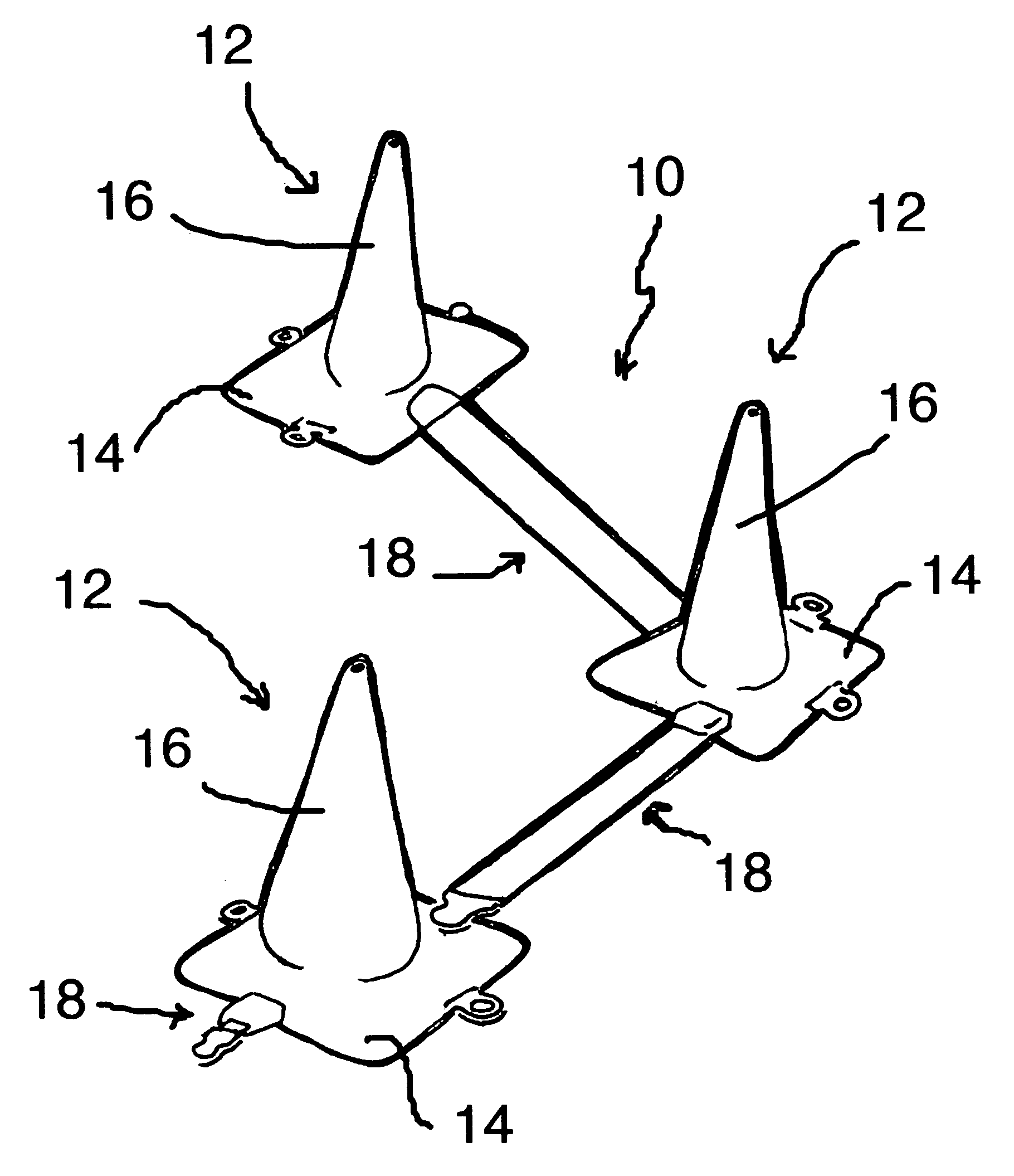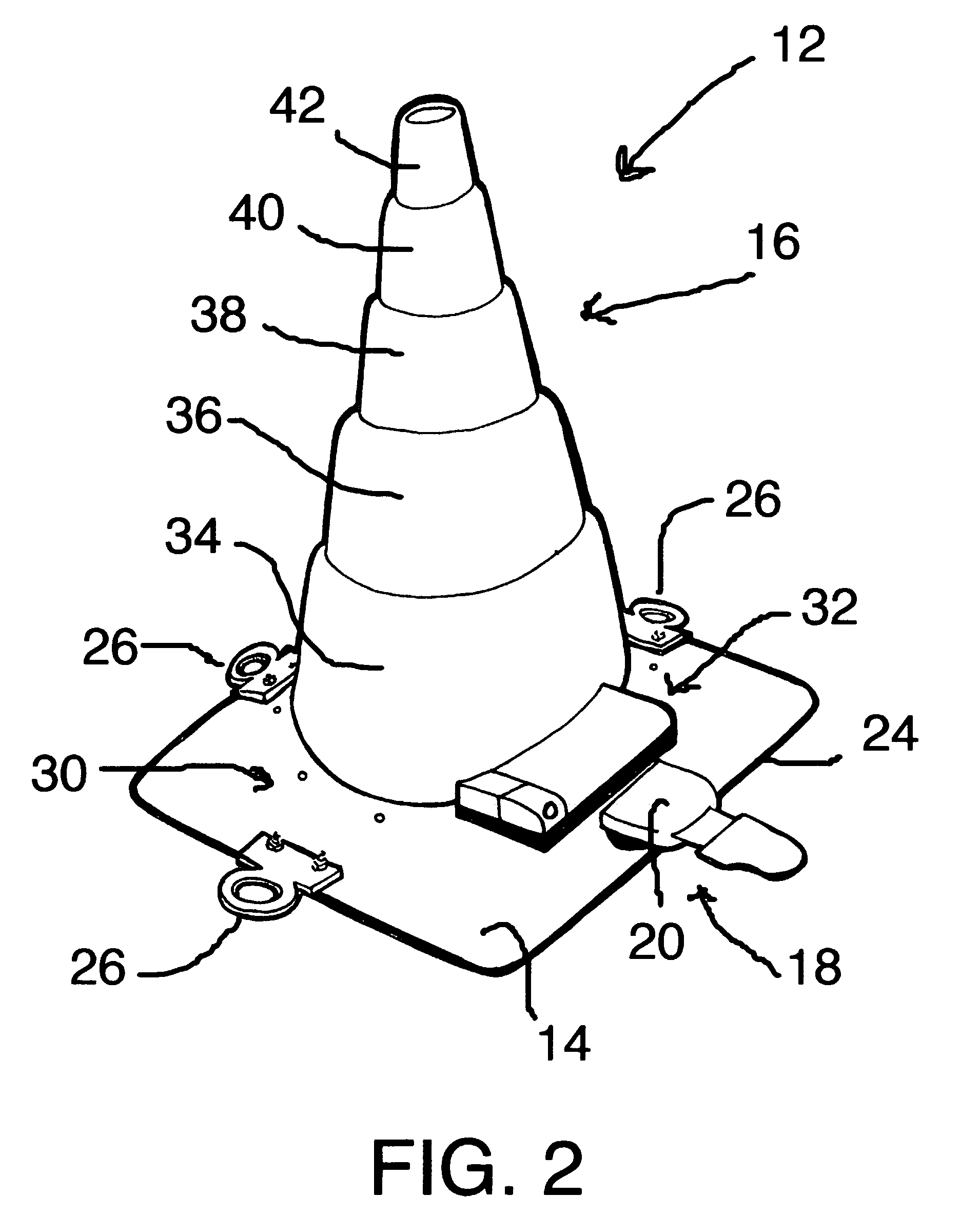Lane maker
a technology of traffic control cones and lane makers, which is applied in the direction of roads, instruments, construction, etc., can solve the problems of more restrictive control, more time and labor required to set up the barrier, and the difficulty of bringing the cones to the site and setting them up,
- Summary
- Abstract
- Description
- Claims
- Application Information
AI Technical Summary
Benefits of technology
Problems solved by technology
Method used
Image
Examples
Embodiment Construction
[0043]Referring now to the FIG. 1, a traffic control lane maker 10 comprises a plurality of traffic cones 12 arranged and interconnected together so as to create a lane designating boundary for a new traffic pattern. The boundary is physically delineated to be more clearly and positively seen.
[0044]Each of traffic cones 12 comprise a substantially square, relatively planar base 14 and a generally conical cap 16. Preferably, traffic cones 12 are made of the usual traffic cone materials and, in the basic embodiment of the invention, are colored in the usual manner. It is within the scope of the invention, however, to make them of other materials and / or other colors. For example, they may be color coded to indicate the type of activity from which the traffic is being separated: (1) red for emergencies, such as stalled cars, collapsed bridges or roadways, downed electrical lines, etc.; orange as now usually associated with official Department of Transportation road repairs; green for ut...
PUM
 Login to View More
Login to View More Abstract
Description
Claims
Application Information
 Login to View More
Login to View More - R&D
- Intellectual Property
- Life Sciences
- Materials
- Tech Scout
- Unparalleled Data Quality
- Higher Quality Content
- 60% Fewer Hallucinations
Browse by: Latest US Patents, China's latest patents, Technical Efficacy Thesaurus, Application Domain, Technology Topic, Popular Technical Reports.
© 2025 PatSnap. All rights reserved.Legal|Privacy policy|Modern Slavery Act Transparency Statement|Sitemap|About US| Contact US: help@patsnap.com



